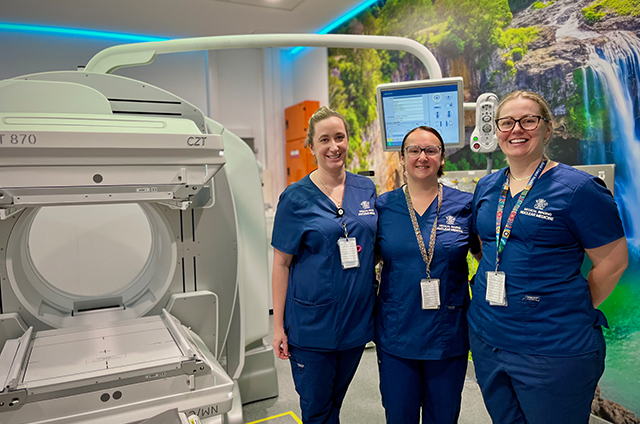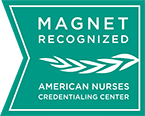
With the recent installation of one of Queensland’s most advanced Nuclear Medicine imaging systems, Gold Coast University Hospital (GCUH) is cutting scan times, improving image clarity and opening new doors for research into life-saving therapies.
The next-generation nuclear medicine upgrade, part of a $2.5 million Capital and Minor Works investment, is set to deliver faster, more accurate diagnostics.
The system began scanning patients in late April and is already showing strong clinical benefits. It marks a major leap forward for a service that was first introduced to the district in 2013, when GCUH opened its doors.
Team Leader for Nuclear Medicine Katelyn Morris said the digital technology delivers clearer images, and faster scan times, which are expected to improve capacity.
“Switching to digital ultimately improves the patient experience and supports better clinical decisions,” Katelyn said.
“Some procedures that previously required 25 minutes of scanning, often with patients holding their arms overhead, can now be completed in five minutes, reducing discomfort and improving patient throughput.
“The upgrade from analogue to digital hasn’t changed the types of scans we perform, but it will significantly improve how we perform them.
“The sharper images support more accurate diagnosis without needing to increase the amount of radioactive material we need to give to our patients or the time they spend in the scanner.
“As the only public Nuclear Medicine service within the Gold Coast region, this upgrade is critical in helping us meet growing demand and maintain timely access to care.”
The upgrade is also enabling new research opportunities, with improved workflows and image quality supporting advanced Theranostic trials led by Senior Nuclear Medicine Technologist Stephanie Schulz.
“These therapies are generally for patients who are very unwell and have limited treatment options,” Stephanie said.
“Theranostic therapies are helping to extend outcomes while offering a better quality of life compared to traditional chemotherapy.”
Previously workload constraints prevented the local delivery of Theranostics, however increased capacity now makes this service available to patients within the Gold Coast region.
Current research underway includes lutetium-based trials for prostate cancer, glioblastoma studies – newly diagnosed and recurrent – and solid tumour investigations using novel Positron Emission Tomography (PET) tracers.
The project includes the installation of two digital SPECT/CT devices as part of a staged replacement of two end-of-life gamma cameras at GCUH. This is critical imaging equipment used by the Nuclear Medicine team to diagnose and manage complex conditions such as cancer, cardiac disease and bone disorders.
The first new GE NM/CT 870 CZT SPECT/CT device was successfully installed in April. The system is one of the most advanced of its kind in Queensland’s public health system. The second new SPECT/CT system is scheduled to be fully operational in late July.
Delivered under Queensland Health’s High Value Health Technology Equipment Replacement (HTER) Program, the project involved more than a like-for-like equipment swap.
Senior Infrastructure Project Manager Udayender – or “Uday” – Baddam said the project involved extensive infrastructure coordination.
“Works included ceiling reconfiguration, installation of patient hoist supports, vinyl wall and floor finishes, electrical upgrades and commissioning of IT systems to support the new imaging platform,” Uday said.
“These are highly specialised environments, so careful planning, precise timing and close collaboration were essential.”
Principal Asset Officer James Perkins said careful consideration was given to the selection of the new technology.
“From the outset, this project required careful alignment between clinical priorities, equipment capability and long-term service planning,” James said.
“Our focus was making sure the investment in new equipment would meet the current needs of the Medical Imaging department while positioning the health service for future growth.”



